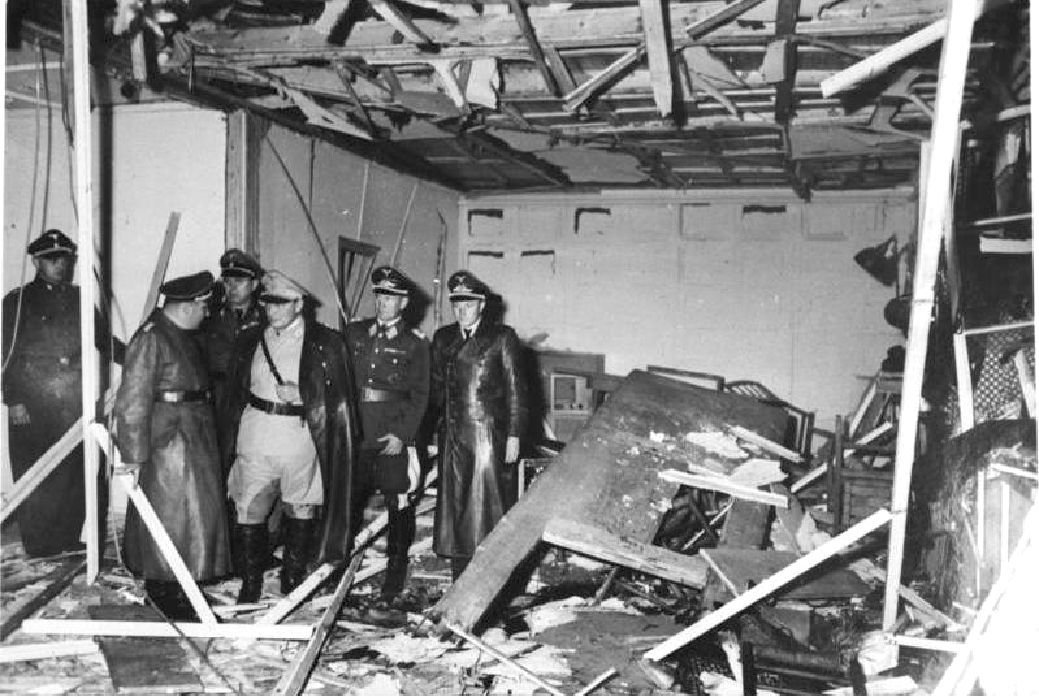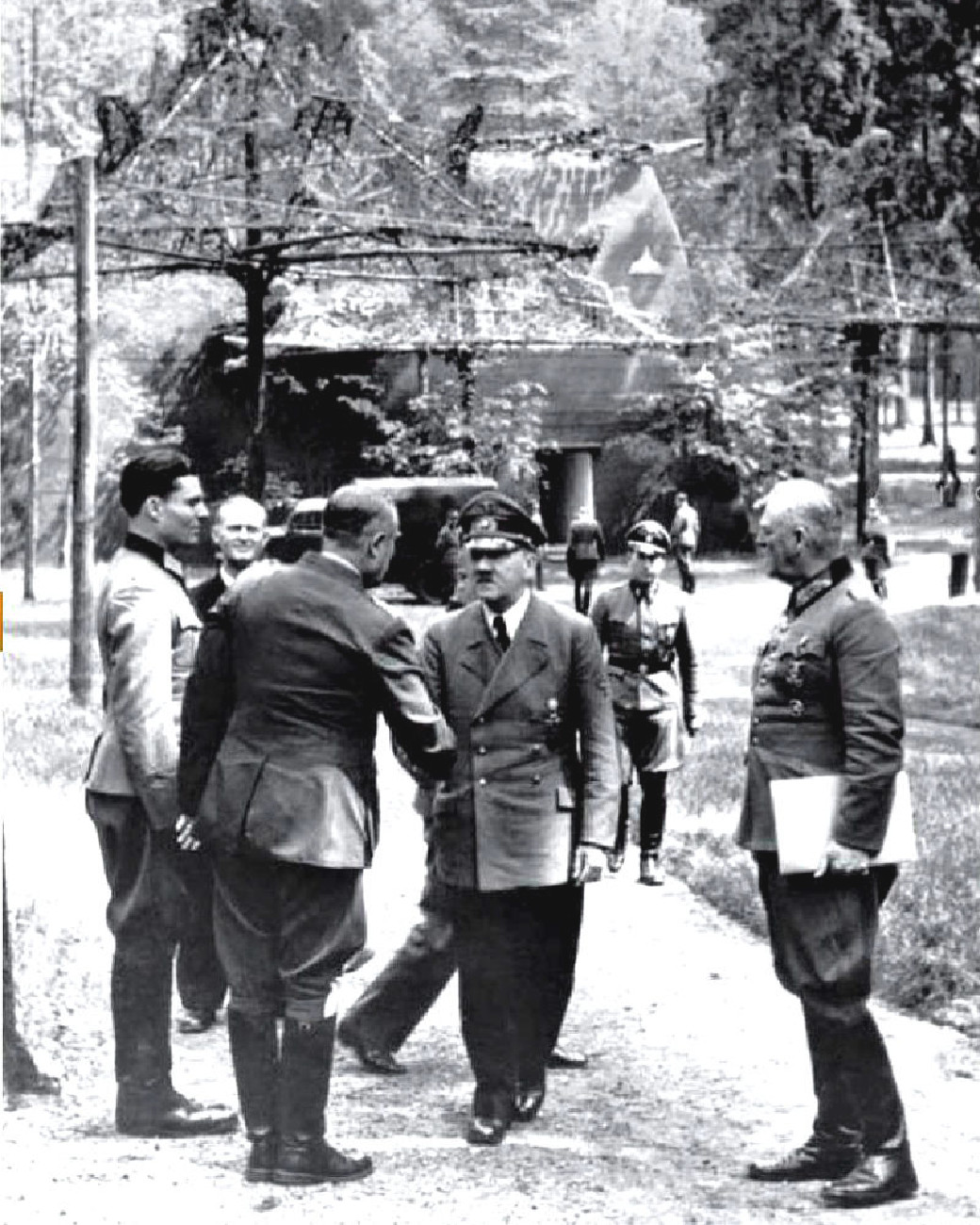
Adolf Hitler
knew his only hope of living again was to encourage his best genetic
scientists to escape Germany before Berlin was overrun. He had been assured
by Joseph Mengele and Ilse Koch, with the backing of Joseph Goebbels, that
they could create a super human race, and restore his dead body to life,
using their new method of duplicating animals and humans.
The Wolf's Lair (German: Wolfsschanze; Polish: Wilczy Szaniec) served as Adolf Hitler's first Eastern Front military headquarters in World War II.
The headquarters was located in the Masurian woods, near the village of Görlitz in Ostpreußen (now Gierłoż), about 8 kilometres (5 miles) east of the small East Prussian town of Rastenburg (now Kętrzyn), in present-day Poland. The central complex and the Führer's bunker were surrounded by three security zones guarded by two Schutzstaffel (SS) units: the SS-Begleitkommando des Führers, and the Reichssicherheitsdienst. The
Wehrmacht's armoured Führerbegleitbrigade was held in readiness nearby but, as a part of the Heer's elite Großdeutschland Division, was used to counter-attack Red Army break-throughs in Army Group Centre's front and rescue cut-off Heer, Luftwaffe Fallschirmjager and SS panzer troops.
The assassination plot, attempt to kill Adolf Hitler, took place at the Wolf's Lair on 20th July 1944.

A
- Z OF NAZI GERMANY

The buildings within the complex were camouflaged with bushes, grass, and artificial trees on the flat roofs; netting was also erected between buildings and the surrounding forest so that the installation looked like unbroken dense woodland from the air. The site consisted of three concentric security zones.
Hitler's secretary, Traudl Junge, recalled that Hitler repeatedly spoke in late 1943 or early 1944 of a possible bomber attack on the Wolfsschanze by the Western Allies. She quoted Hitler as
saying:
"They know exactly where we are, and sometime they’re going to destroy everything here with carefully aimed bombs. I expect them to attack any day."
According to Speer, between 28 July 1941 and 20 March 1942, Hitler left Rastenburg only four times for a total of 57 days. Afterwards, Hitler spent the next three months in Obersalzberg before returning to Rastenburg for the next nine months.
Hitler's entourage returned to the Wolfsschanze from an extended summer stay at the Berghof in July 1944. The previous small
bunkers had been replaced by the Organisation Todt with "heavy, colossal structures" of reinforced concrete as defense against the feared air attack. According to Armaments Minister Albert Speer, "some 36,000,000 marks were spent for bunkers in Rastenburg [Wolf's Lair]."
Hitler's bunker had become the largest, "a positive fortress" containing "a maze of passages, rooms and halls." Junge wrote, "We had air-raid warnings every day" in the period between the 20 July assassination attempt and Hitler's final departure from the Wolfsschanze in November 1944, "but there was never more than a single aircraft circling over the forest, and no bombs were dropped. All the same, Hitler took the danger very seriously, and thought all these reconnaissance flights were in preparation for the big raid he was expecting."
No air attack ever came. It has never been revealed whether the Western Allies knew of the Wolfsschanze's location and importance. The Soviet Union was unaware of both the location and the scale of the complex until the site was uncovered by its forces during their advance towards Berlin in early 1945.

THE DAILY ROUTINE
Hitler would begin his day by taking a walk alone with his dog around 10 a.m. or so, after waking up, and at 10:30 a.m. he looked at the mail that had been delivered by air or courier train. A noon situation briefing would be convened, either in Keitel's or Jodl's bunker, and frequently ran for two hours. This was followed by lunch at 2 p.m. in the dining hall. Hitler invariably sat in the same seat between Jodl and Otto Dietrich, while Keitel, Martin Bormann, and Göring's adjutant General Karl Bodenschatz sat opposite him.
After lunch, Hitler dealt with non-military matters for the remainder of the afternoon. Coffee was served around 5 p.m., followed by a second military briefing by Jodl at 6 p.m. Dinner could also last as long as two hours, beginning at 7:30 p.m., after which films were shown in the cinema. Hitler then retired to his private quarters where he gave monologues to his entourage till late, usually going to sleep around 3 or 4 a.m. Occasionally, Hitler and his entourage listened to gramophone records of Beethoven symphonies, selections from Wagner or other operas, or German lieder.
REASON FOR CONSTRUCTION
As part of the preparations for the coming Operation Barbarossa, the decision was made in late 1940 to build a military headquarters for the Führer in Eastern Europe, similar in concept to the Felsennest in Western Europe. Like the Felsennest, the new headquarters had to be as close to the front as possible, but far enough to be safe from enemy forces.
Eventually, a top-secret site was chosen in the middle of the Masurian woods, in what was then East Prussia, far from roads and urban areas, and accessible only by a single railway and small airstrip. To maintain secrecy, locals were told that the construction works were for a new cement factory. The Organisation Todt completed construction of the entire 6.5 km2 (2+1⁄2 sq mi) complex by 21 June 1941.
Hitler first arrived at the headquarters on 24 June 1941, two days after Barbarossa commenced. At its peak, over 2,000 people lived and worked at the Wolf's Lair, including food-tasters to guard Hitler against poison. Additional construction work began in mid-1944 to enlarge and reinforce many of the original buildings on the site on Hitler's orders, although the work was never completed because of the Red Army's rapid advance during the Baltic Offensive.
Hitler left the Wolf's Lair for the final time in November 1944 after having spent over 800 days there, the longest he had stayed at any place over the course of the war, during a
3 and 1⁄2-year period.

|





